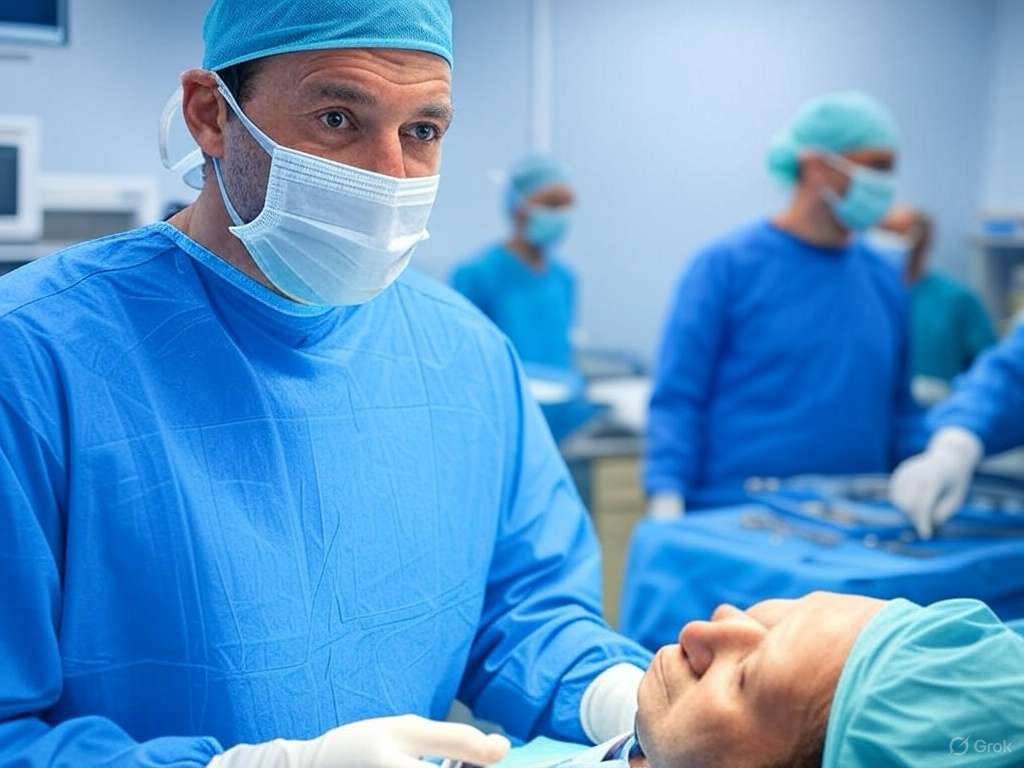How Is Gastric Sleeve Surgery Done?
Introduction to Gastric Sleeve Surgery
Gastric sleeve surgery, also known as sleeve gastrectomy, is a bariatric procedure designed to aid in weight loss by reducing the size of the stomach. This procedure is performed laparoscopically and permanently removes a large portion of the stomach, leaving a sleeve-like structure.
"Gastric sleeve surgery is one of the most effective weight-loss procedures, helping patients lose up to 60-70% of their excess weight within a year." - Dr. Richard Adams, Bariatric Surgeon

The Surgical Procedure Step-by-Step
Step 1: Administering Anesthesia
The procedure begins with the patient being placed under general anesthesia. This ensures that the patient is unconscious and does not feel any pain during the surgery.
Step 2: Laparoscopic Incisions
Once the anesthesia has taken effect, the surgeon makes four to five small incisions in the abdomen. These incisions serve as entry points for the laparoscopic instruments.
- Trocar insertion: A small tube (trocar) is inserted into each incision to allow surgical instruments to be passed through.
- Camera insertion: A tiny camera (laparoscope) is inserted to provide a clear, magnified view of the stomach and surrounding organs.
Step 3: Stomach Size Reduction
The next step involves reshaping the stomach into a smaller, sleeve-like structure.
- Approximately 75-80% of the stomach is removed using a stapling device.
- The remaining stomach is shaped into a narrow tube that holds significantly less food.
"By removing most of the stomach, we reduce the body's capacity for food intake while also decreasing hunger hormones, making it easier for patients to control their appetite." - Dr. Emily Carter, Bariatric Specialist
Step 4: Ensuring Safety and Leak Testing
After reshaping the stomach, the surgeon performs several safety checks:
- Reinforcing the staple line: Some surgeons may use additional sutures or sealants to reinforce the stapled area.
- Leak test: A dye or air test is performed to ensure the stomach is sealed properly and there are no leaks.
Step 5: Closing the Incisions
Once the stomach reshaping is complete, the laparoscopic instruments are carefully removed, and the incisions are closed using sutures or surgical glue.
Timeframe and Hospital Stay
Gastric sleeve surgery is typically completed within 60 to 90 minutes. After the procedure:
- Patients are moved to a recovery room and monitored closely.
- The hospital stay is usually 1 to 2 days before discharge.
What Happens Immediately After Surgery?
Postoperative Monitoring
After waking up from anesthesia, patients are monitored for:
- Vital signs (heart rate, blood pressure, oxygen levels)
- Pain management and nausea control
- Early movement to prevent blood clots
Starting a Liquid Diet
In the first few hours after surgery, patients are given small sips of water. Over the next few days, they transition to a liquid diet, which includes:
- Broths
- Protein shakes
- Unsweetened tea
How Gastric Sleeve Surgery Promotes Weight Loss
Gastric sleeve surgery helps with weight loss through two main mechanisms:
1. Stomach Size Reduction
The smaller stomach capacity restricts food intake, leading to fewer calories consumed.
2. Hormonal Changes
By removing a large portion of the stomach, levels of ghrelin, the hormone responsible for hunger, are significantly reduced.
"Patients often notice a dramatic decrease in hunger, making it easier to maintain a healthy diet after surgery." - Dr. Michael Green, Endocrinologist
Potential Risks and Complications
Like any surgical procedure, gastric sleeve surgery carries some risks, including:
- Infection at the incision sites
- Bleeding or blood clots
- Leakage from the staple line
- Vitamin deficiencies due to reduced nutrient absorption
Conclusion: A Life-Changing Procedure
Gastric sleeve surgery is a safe and effective weight-loss procedure for individuals struggling with obesity. By following proper post-surgical guidelines, patients can achieve long-term success and improve their overall health.
"This procedure offers not just weight loss but a new beginning for those battling severe obesity." - Dr. Anna Reynolds, Bariatric Surgeon
If you’re considering gastric sleeve surgery, consult a specialist to discuss whether it’s the right option for you.
The information provided on gastric-sleeve-surgery.com is intended for general informational purposes and should not be considered a substitute for professional medical advice, examination, diagnosis, or treatment by a qualified healthcare provider. The content on gastric-sleeve-surgery.com is not intended for use in self-diagnosis or self-treatment. For more information see the detailed disclaimer.
